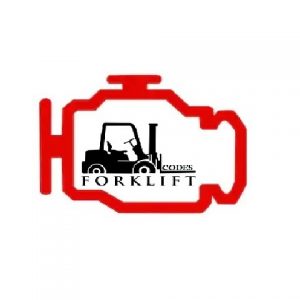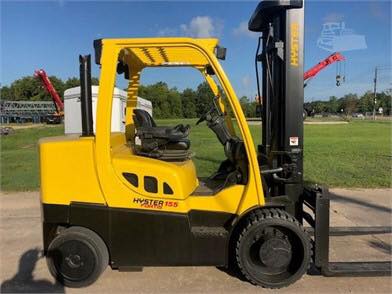POSSIBLE CAUSE
A. INCHING AND OPERATING THE LIFT TRUCK WITH LOADS GREATER THAN CAPACITY RATING.
B. TRANSMISSION OIL LEVEL IS INCORRECT OR WRONG TYPE.
C. OIL COOLER CIRCUIT EXTERNALLY DAMAGED.
D. BRAKES ARE DRAGGING.
E. OIL COOLER CIRCUIT RESTRICTED.
F. TORQUE CONVERTER IS DAMAGED.
G. CLUTCH DISCS ARE WARPED OR NOT RELEASING.
H. OVERHEATING BRAKES. (WET BRAKE ONLY)
I. INCH BRAKE OUT OF ADJUSTMENT
CAUSE A – INCHING AND OPERATING THE LIFT TRUCK WITH LOADS GREATER THAN CAPACITY
RATING
NOTE: See Serial Number plate or Operating Manual for lift capacity.
PROCEDURE OR ACTION:
- Check load weight and compare to lift truck capacity rating.
Is load weight greater than lift truck capacity?
YES: Decrease load weight.
NO: Go to CAUSE B.
CAUSE B – TRANSMISSION OIL LEVEL IS INCORRECT OR WRONG TYPE
PROCEDURE OR ACTION:
NOTE: Transmission oil level too low can cause overheating. Maintain oil at correct level.
- Check transmission oil level and oil type. Verify the transmission temperature with thermal couple in dipstick
tube.
Is transmission oil level low and the wrong type?
YES: Flush transmission and add the correct type oil to proper level. See Operating Manual.
NO: Go to CAUSE C.
CAUSE C – OIL COOLER CIRCUIT EXTERNALLY DAMAGED
PROCEDURE OR ACTION:
- Inspect oil cooler and lines for debris or external damage.
Is oil cooler and lines damaged or clogged with debris?
YES: Clean oil cooler to remove external debris and improve air flow for cooling. Repair or replace damaged
oil cooler and lines.
NO: Go to CAUSE D.
CAUSE D – BRAKES ARE DRAGGING
WARNING
Touching brake components can cause serious burns. Do not use hands to check temperature of wheel
components.
- Check brakes for overheating using paint stick or infrared heat sensor.
Do the brakes smell burnt and show signs of overheating?
YES: For wet brake axles, go to CAUSE E. For dry brake axles, inspect and adjust brake shoes. Refer to
appropriate Brake System manual, depending on lift truck model.
NO: Go to CAUSE H.
CAUSE E – OIL COOLER CIRCUIT RESTRICTED
PROCEDURE OR ACTION:
- Check oil cooler and lines for a restriction. Perform Transmission Pressure Test.
Is converter pressure out of specification?
YES: Back flush the oil cooler and lines to remove internal debris. Replace oil cooler and lines as necessary.
Refer to appropriate Powershift Transmission, Repair, Single Speed Powershift, Aluminum
Transmission, Three-Speed Powershift Transmission Repair, or Two-Speed Powershift Transmission
Repair manual, depending on lift truck model.
NO: Go to CAUSE F.
CAUSE F – TORQUE CONVERTER IS DAMAGED
PROCEDURE OR ACTION:
- Check torque converter stall speeds. See Torque Converter Stall Test.
Do stall speeds meet test specifications?
YES: Go to CAUSE G.
NO: If stall speeds are high, clutch packs may be slipping. See Operational Diagnostic Procedures,
Operational Checkout, Page 9010-05-9. - Test transmission pressure. Perform Transmission Pressure Test.
Is pressure at test specifications and does it pass transmission clutch check?
YES: Replace torque converter. Refer to appropriate Powershift Transmission, Repair, Single Speed
Powershift, Aluminum Transmission, Three-Speed Powershift Transmission Repair, or Two-Speed
Powershift Transmission Repair manual, depending on lift truck model.
NO: Go to CAUSE G.
CAUSE G – CLUTCH DISCS ARE WARPED OR NOT RELEASING
PROCEDURE OR ACTION:
- Perform Transmission Clutch Drag Test (1.0-5.5 Ton Trucks Only).
Does lift truck fail clutch drag Test?
YES: Remove transmission and repair clutch pack. Refer to appropriate Powershift Transmission, Repair, Single Speed Powershift, Aluminum Transmission, Three-Speed Powershift Transmission Repair, or two-Speed Powershift Transmission Repair manual, depending on lift truck model.
NO: For wet brake axle, go to CAUSE H. For dry brake axle, resume normal operation while monitoring transmission oil temperature.
CAUSE H – OVERHEATING BRAKES. (WET BRAKE ONLY)
PROCEDURE OR ACTION:
- Verify wet brake temperature. Refer to Observed Symptoms, Overheating Brakes (Wet Brake Axle Only). Click Here
Are brakes overheating?
YES: Refer to Observed Symptoms, Overheating Brakes (Wet Brake Axle Only).
NO: Resume normal operation while monitoring transmission oil temperature.
CAUSE I – INCH BRAKE OUT OF ADJUSTMENT
NOTE: The following can be observed when the inch brake system is out of adjustment:
• Inching control is poor
• Inching control has very little pressure modulation
• Acceleration while exiting inching mode at high engine speed is abrupt
• Inch/brake pedal has very little “free-pedal” at the top of the stroke
• Inch/brake pedal is very firm
• Low Power
PROCEDURE OR ACTION:
- Monitor the inch/brake pedal during operation.
Does inch/brake pedal characteristics resemble any of the observations listed above?
YES: Perform the following:
• Shorten the brake master cylinder actuator push rod by releasing the lock nut and turning rod 1/2 turn CCW. Retighten lock nut.
• Drive truck and perform 10 “normal” braking events to allow VSM to learn the new push rod setting.
• Test the inching performance
• Adjust the inch/brake pedal overlap setting in the user menu.
• Repeat if symptom has improved but is still unsatisfactory.
NO: Resume Operation.

